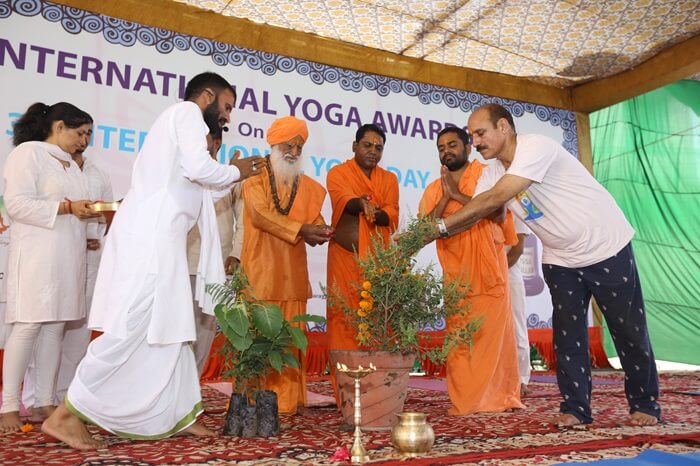The Power of Singing in Yoga Practice

Singing is fundamental to humanity, with origins lost in antiquity. We sing to lull children to sleep, to express euphoria, to convey love, to foster hope, and to praise the divine.
Singing in Yoga

In the realm of yoga, singing plays a significant role. Practitioners chant mantras while practicing yoga to cultivate inner harmony. Singing is a means to discover your innermost voice.
Traditionally, Kirtan differs from mantras in that mantras are chanted for personal purposes, while Kirtan is about communal gathering. When people come together to sing praises to deities, it is known as Kirtan. This collective singing fosters spiritual bliss and devotion, transporting participants to a meditative state of utmost happiness and peace.
“When people sing together, the vibrations produced delve deeper into the hearts of individuals, transporting them into a divine space.”
Benefits of Kirtan

- Destroyer of Negativity: The Yoga Sutras (1.27-31) state that chanting eliminates “disease, procrastination, laziness, doubt, pain, nervousness, and lamentation.” Kirtan removes seeds of negativity, promoting happiness and health.
- Awakens Blissfulness: According to Arjuna in the Bhagavad Gita (11.36), “the world rejoices upon hearing your name.”
- Spiritual Practice: The Srimad Bhagavatam describes Kirtan as the “ultimate spiritual practice” leading to spiritual perfection.
- Divine Connection: By singing praises to the divine, participants experience the presence of a supreme power and the awakening of the loving center—the heart.
Role of Kirtan in Yoga Practice

For centuries, sounds and music have been used to access higher consciousness and healing. Practices like using Tibetan singing bowls, Chinese meditation gongs, and drumming are examples. In India, the human voice and classical instruments have been used to open spiritual channels, harmonize the body, and pursue self-realization. Nada Yoga, the yoga of sounds, connects people with the unstruck sound of true being.
Similarly, the soulful vibrations of Kirtan activate the heart chakra, the center of deep emotions and desires. These sounds provide harmonic healing, reduce chronic pain, and improve conditions in stroke-affected patients. Devotional songs uplift emotions, helping practitioners reach a higher state of consciousness.
Kirtan aims to purify emotions through devotion. The synchronization of sound and breath with muscle movements makes practitioners feel alive and present. This coordination develops concentration and breath capacity. During Kirtan, an emotional shift occurs due to the buildup of devotional energy, leading to cleansing and liberation from burdens.
With Kirtan, our thoughts and bodies are purified, revealing the deeper layers beyond pain and suffering. This marks the beginning of spiritual ecstasy and connection with purpose. Kirtan is a key aspect of Bhakti Yoga, one of the four main paths to enlightenment. The essence of Bhakti Yoga lies in surrender to the Divine, uniting practitioners with universal consciousness through Kirtan.
Yoga Sadhana Through Kirtan

Practicing Kirtan at home helps develop a connection with oneself and the Almighty. Kirtan practices also help individuals power their ego through self-discipline. Sadhana within yoga aligns the practitioner with spiritual goals.
To learn more about Kirtan, join our Yoga Teacher Training in India.
Conclusion
Kirtan offers profound spiritual benefits, from eliminating negativity to fostering divine connections. By integrating Kirtan into yoga practice, individuals can experience emotional purification, enhanced concentration, and a deeper connection to the divine. Whether through communal gatherings or personal practice, Kirtan provides a path to spiritual bliss and self-realization. Discover the transformative power of Kirtan through our comprehensive Yoga Teacher Training Courses in Kerala.
Explore more about Kirtan and other enriching practices with our Ayurveda Retreats and Yoga Retreats in India.















